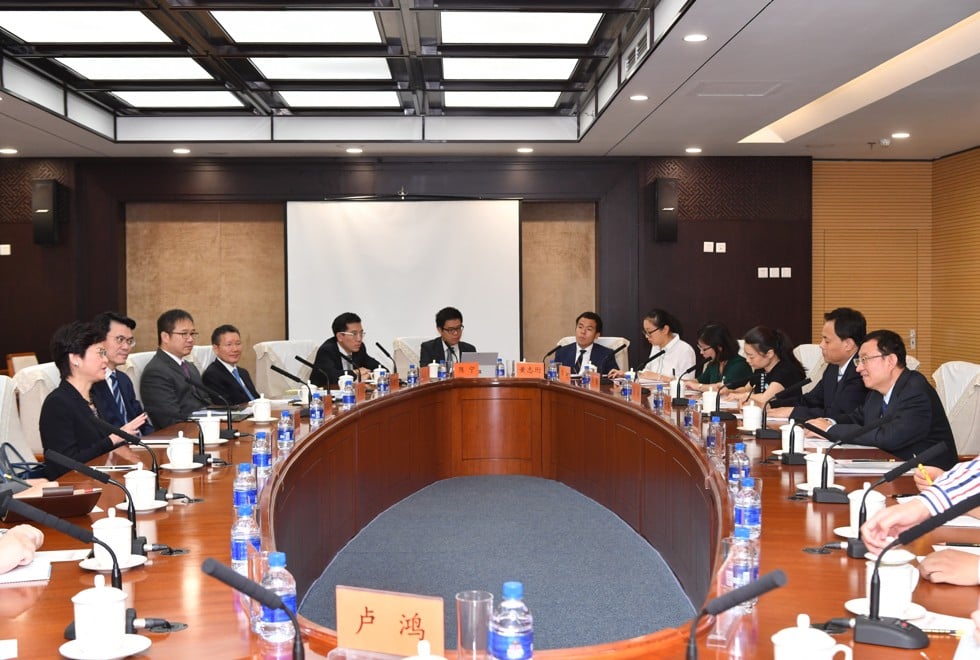
Hong Kong to get formal role in Beijing’s belt and road plan
Speaking at end of four-day visit to Beijing, Chief Executive Carrie Lam also unveils creation of communication mechanism on Greater Bay Area project
Hong Kong has been promised stronger support from Beijing in developing its economy, with plans to establish a formal role for the city in the “Belt and Road Initiative” and boost communication on the development of the Greater Bay Area plan for the Pearl River Delta region.
Chief Executive Carrie Lam Cheng Yuet-ngor outlined the initiatives on Wednesday as she concluded her four-day visit to Beijing, during which she called on 16 ministries and organisations.
Lam rejects idea to limit power of China’s officers at joint checkpoint in Hong Kong, or defer launch for consultation
Lam described her visit as “fruitful” and “down-to-earth”,adding both sides had agreed to discuss the signing of an agreement to fully leverage Hong Kong’s advantages in professional services and finance.
“They expressed support for Hong Kong to develop into an international financial hub,” Lam said after meetings with senior officials from the People’s Bank of China and regulatory commissions.
She also revealed that foreign minister Wang Yi expressed support for Hong Kong to play a bigger role in the international arena, like the setting up of more trade offices in belt and road countries.
The initiative is Beijing’s blueprint to link various economies into a China-centric trade network.
An agreement was also signed on Wednesday with the National Tourism Administration to enhance tourism exchanges between the two sides. One of the initiatives involves the joint development of tourism products featuring belt and road markets.
Hongkongers are ‘calm’ about joint checkpoint plan for high-speed rail terminal, top Chinese official says
Tourism sector lawmaker Yiu Si-wing predicted visa arrangements could be streamlined to allow easier travel for tourists.
He also expected the high-speed railway connecting Hong Kong and Guangzhou to play an integral role in drawing long-haul travellers looking to tour around Asia.
“The project will connect the city to the mainland’s vast railway network, as well as belt and road regions to the west, opening up endless opportunities for land travel,” he said.
Restrictions would also be eased “on a gradual basis” to allow more Hong Kong travel agents to operate outbound tours from the mainland.
But Johnny So, general manager of Sunflower Travel, said he could not see scope for local agents to compete with their mainland counterparts.
Apart from the “profound” cultural difference, he said the amount of red tape also made doing business difficult. “Where do we file the taxes? And whose side’s laws should we follow when we run into trouble?” So asked.
Act on national education for the young, Hong Kong leader Carrie Lam told by Chinese minister on Beijing visit
On the Greater Bay Area development encompassing Hong Kong, Macau and nine Guangdong cities, Lam said a mechanism would be set up to maintain regular contact on top of a framework agreement signed between the governments of Guangdong and the two special administrative regions last month.
Lam also revealed that obstacles facing Hong Kong performing arts groups wanting to stage shows on the mainland would be removed.
She hoped a deal could be struck by November, when the 10th Asia Cultural Cooperation Forum is held in the city.




